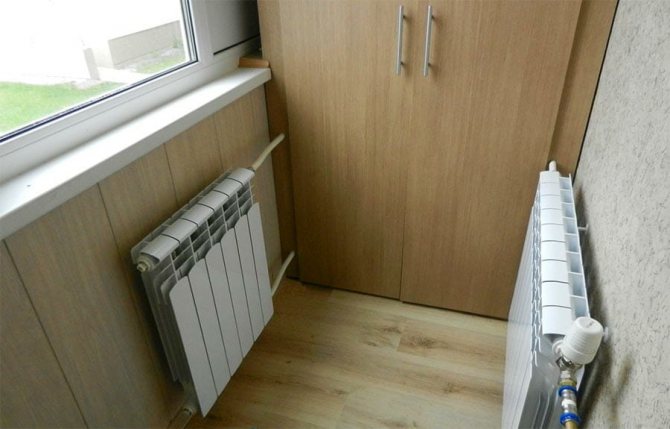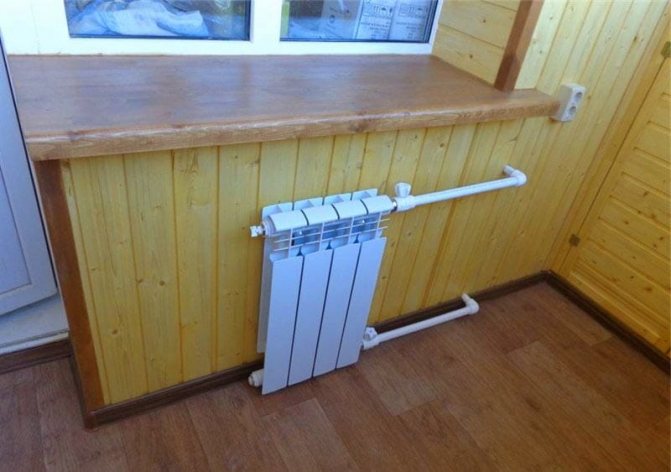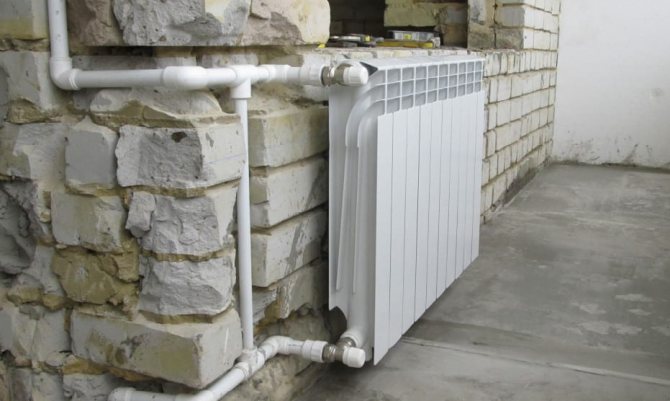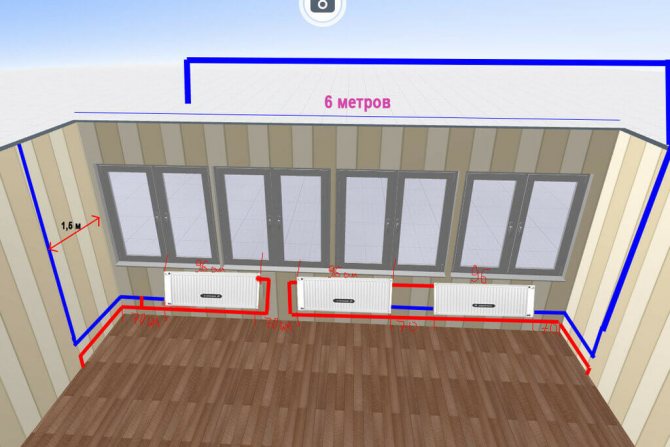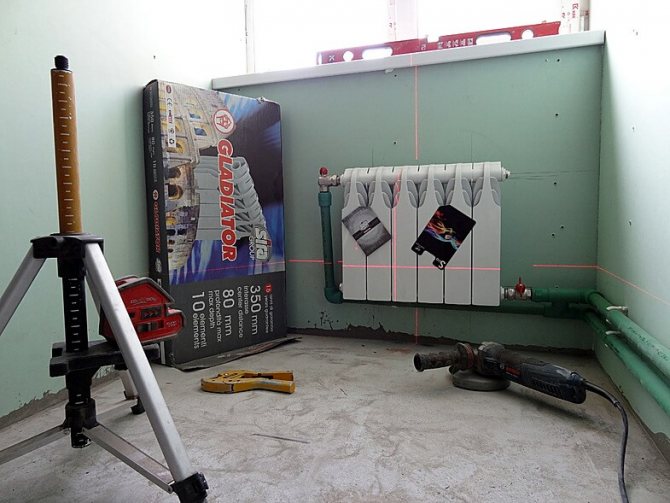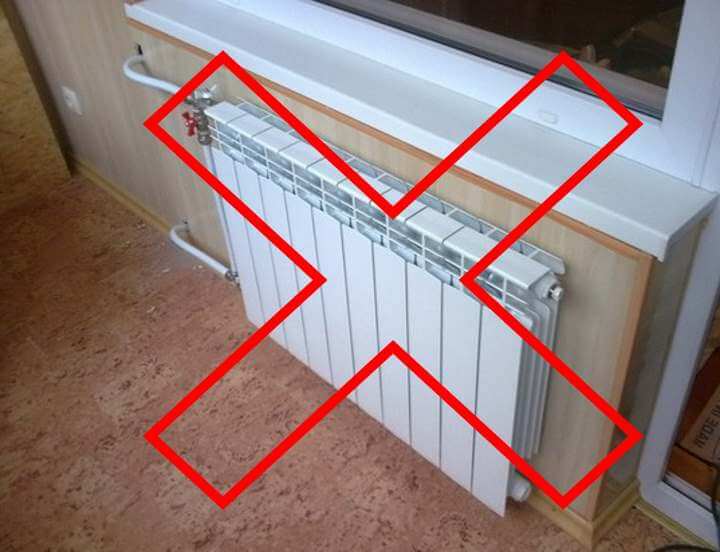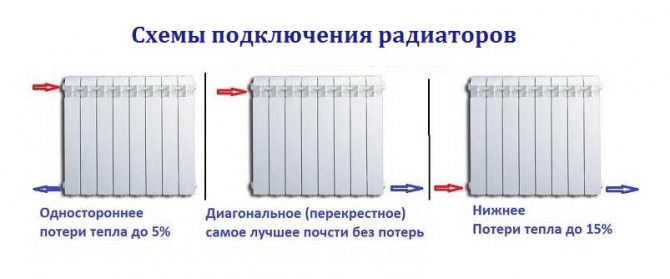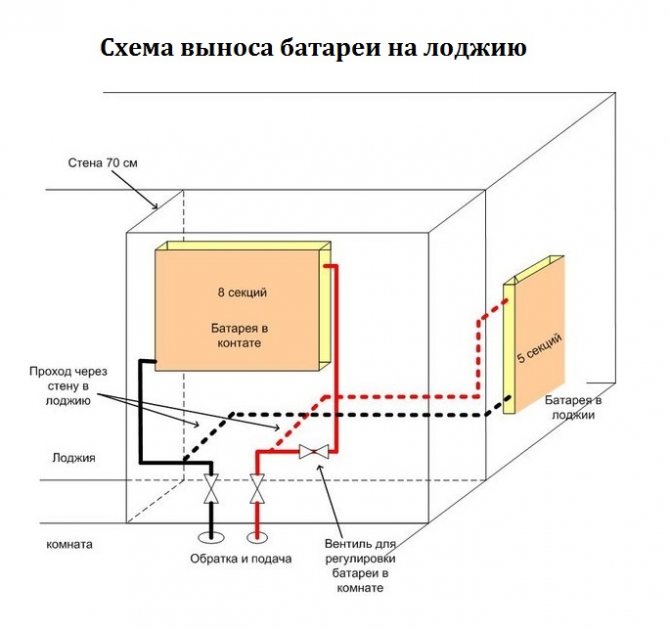It is pointless to deny the facts. Many people move batteries to the loggia bypassing the law, doing everything at their own peril and risk. And the risk is considerable. The violator faces a serious fine and forced dismantling (of course, at his own expense). You cannot use the central heating system as you please. In fact, it is more complicated than it seems. Much matters: the volume of the circuit, the volume and heat output of heat exchangers, hydraulic resistance. In this case, all indicators are interconnected, it is worth changing one and the whole operation of the system will be disrupted.
So you can or can not take the battery out to the balcony
In accordance with the Housing Code of the Russian Federation, article 15, paragraph 5, a balcony or loggia does not belong to a living space, and therefore rebuilding is prohibited here. At the same time, there are nuances that, with great effort, but still make it possible to legitimize the transfer of the battery to the balcony.
An unheated balcony never gets really warm, and therefore it will be almost impossible to use it as a living space. Insulation and glazing with metal-plastic profiles serve as good thermal insulation, protecting the space from cold air penetration into the interior and heat leakage to the street.
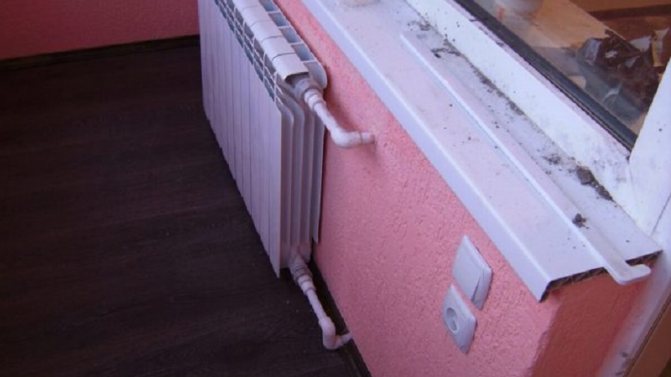
And here so that it is warm on the balcony or loggia at any time of the year, you need to think about heating... At this stage of the repair, many are just thinking about the soul-trembling question of whether it is possible to bring the battery to the balcony.
Interesting on the site:
Penoplex on the balcony: how to insulate the room yourself
What is izolon: types, features, material advantages
Why you can not install the battery on the balcony
Why it is impossible to take the battery out to the balcony, even if there is an urgent need for it:
- You can flood your neighbors on the floor below... In winter, when the outside temperature drops below zero, there is a risk that the heating battery installed on the balcony may freeze and "explode" under high pressure. In Moscow, even having insulated a balcony or loggia, they do not issue permission to transfer the battery.
- Additional load on central heating... If one or more elements are added to existing radiators, the water pressure will weaken and lead to cold radiators throughout the house. So you risk not only getting a fine for the battery on the balcony, but also conflicts with your neighbors.
- Heating cost... The cost of a "communal" for central heating in the house is calculated per square meter for all residents of the house. Therefore, having made the output of the battery to the balcony, the price for heating will increase for all residents of the apartment building. If discovered, they have every right to sue and, with a high probability, win it. Of course, this fact can be hidden, but living in constant fear that deception will be revealed is stressful and risky.
- Problems when selling an apartment... When selling square meters, you are obliged to give the buyer a technical plan (technical passport), where, in addition to the layout, the thermal circuit is also indicated, which you changed by deciding to lead the battery to the balcony. There are two ways out - to return everything as it was, or to seek the legality of the removal.
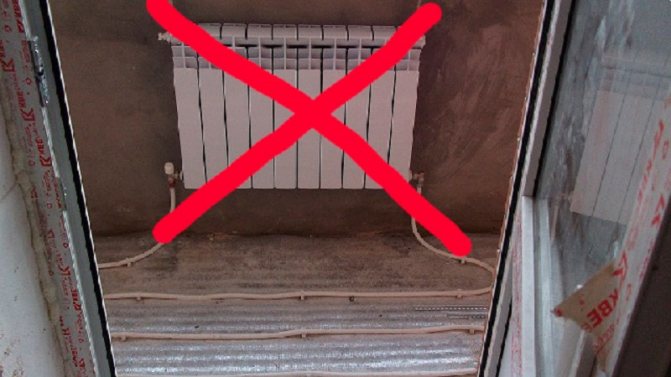

Legality of the event
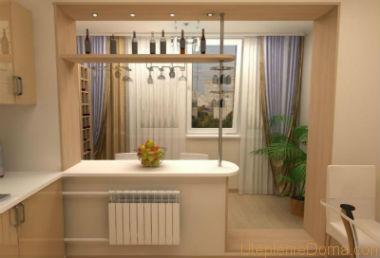

It is not necessary to take the radiator out to the loggia. you can increase the heat output of an existing one.
According to the law, the removal of the battery to the loggia is allowed only if this is agreed with the service organization. That is, you must apply to your housing office with a statement in the prescribed form.The staff will consider it and, most likely, the case will stop there. Indeed, it is extremely difficult to legalize this event.
Why are they not allowed to take out radiators to non-residential premises:
- overrun of the coolant;
- violation of the project;
- imbalance in the heating system.
For the transfer to be legal, you first need to redo the project of the apartment, adding the loggia to the living area.
To do this, you need to call the commissions, hire designers, coordinate everything in the appropriate authorities. Then, you need to redevelop the heating system. The heat loss of the room, which has already changed, the volume of the circuit, its hydraulic resistance must be taken into account.
There are cases when the heat exchanger is taken out of the dwelling at your own peril and risk, without legitimizing this event. We would like to warn you that such actions are suppressed by the workers of housing offices, and those caught are fined and forced to return everything as it was according to the project.
There is not a central gas pipeline everywhere, so stove heating of a house in a village is still relevant.
About what convection ovens for heating a house are written here.
In what cases can you legally lead a battery to the balcony
In case of obtaining permission for redevelopment and the status of the living space on the balcony or a loggia.
Important! It is possible to lead the battery to the balcony, while not violating the legal framework, but with great effort and time. If you are ready for this, then I will tell you how to do it.
To transfer the heating radiator to the balcony it is imperative to obtain permission from the housing inspectorate... And it doesn't matter if you take out the old one, or are going to put a new element into the heating system. If you start dismantling a radiator and installing a new one without getting permission, you are already breaking the law.
We would like to note that this procedure is a bureaucratic problem that can last for more than one month.... If at the same time repairs are made, then it will stretch, which is very unpleasant. Therefore, I often meet cases when they first install the radiator on the balcony, and then they seek permission. But I want to note that there is a high probability that they may refuse to receive.
Before you go and ask for that very permission take care of making accurate calculations... You should have in your hands accurate calculations regarding the number and size of sections, their location, pipeline pressure and temperature. You cannot do this yourself without the proper skills, so you need to contact professional designers. Such an extensive collection of information for the BTI will testify to the safety of your decision to bring the radiator to the balcony, and therefore the likelihood of getting the "go-ahead" is higher.
Before putting the battery on the balcony, it is necessary to make insulation... Without it, it is impractical to make a transfer, since on a cold loggia all the warm air will go out into the street, moreover, in this case, you will not be able to prove that the temperature on the balcony in winter will be acceptable for installing a battery.
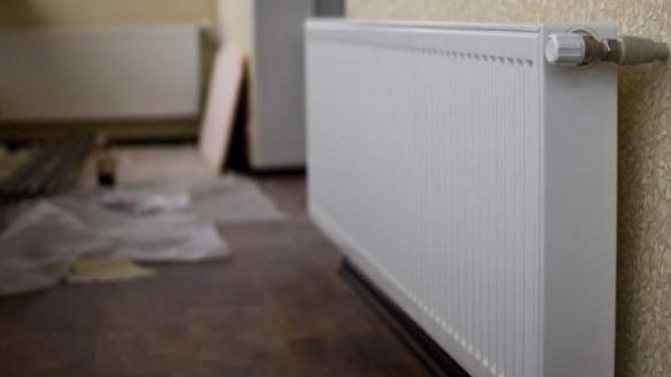

Documents for obtaining permission:
- Calculation of thermal conductivity.
- An official conclusion from experts, which confirms that the water in the battery will not freeze.
- The developed planning project - you can contact the design company.
Depending on the region where you are going to install the radiator on the balcony, the housing inspectorate can modify and add an additional list of papers.
Note! In order not to delay the repair, some decide to put the battery on the balcony without obtaining the notorious permission, but only after the completion of the installation work, begin to do the decoration. I warn you, this is risky, because there is always a possibility that the BTI services may refuse a decision.
On the net and in various forums, you can come across the advice of the owners of such apartments, who decided that it is possible to install a battery on the balcony without any documentary problems. They say they live for 10 years and even manage to sell. We would like to especially note, firstly, you should not listen to anonymous users who are not responsible for what they have written (very sorry), and secondly, approach your situation individually, because you will never know what and how others actually had there. Maybe:
- their heating system is not central, but individual;
- neighbors do not mind or they do not care about what is happening there in the apartment of others;
- “The hour has not yet struck” and the detection of illegal planning remains a matter of time.
Advice! Think with your own head, reading such recommendations, and remember that if something happens, you are responsible for what you have done, and not anonymous Internet users.
Bureaucratic issues
In the housing inspection, apartment owners will be required to:
- Professionally performed thermal conductivity calculations;
- The professional conclusion of experts that outside the apartment the water in the heating radiator will not freeze;
- Redevelopment project and a number of other documents, the list of which needs to be clarified in the district housing inspectorate.
Moreover, the most difficult stage will be the development of a redevelopment project, which provides for a change in the status of the loggia.
From a non-residential premises, it should turn, strictly according to documents, into a living room. The author of the apartment building project is responsible for issuing such documents (as a rule, it is a company or a design institute).
It is worth noting that specialized firms are engaged in the development of the project itself for changing the status.
In the project, the specialist responsible for its development must take into account all the nuances and norms (construction, sanitary, fire-prevention, engineering, communication, etc.). Of course, before developing a project, it is required to insulate the premises with high quality and take into account possible risks.
The design institute usually gives such permits if the removal of the central heating battery does not affect the condition of the entire building. That is why, in most cases, there are no problems with obtaining a permit in new buildings and relatively new buildings, while the houses of the old housing stock will officially be almost impossible to carry out.
After all this, it is required to develop project documentation, which must be agreed with Rospotrebnadzor and the fire service. At the end of everything, it is necessary to register the redevelopment with the BTI, where the corresponding changes will be made to the documents of title.
What does the law say about the removal of heating radiators
If, despite the fact that you have fulfilled all the requirements and there are no good reasons for refusal, but you are still given a negative answer, be prepared to defend your position... And for this it is necessary to be well versed in the bills that regulate this issue.
Important! Study in detail these 2 provisions of the Housing Code of the Russian Federation: article 25, paragraph 1 and article 15, paragraph 5.
Briefly about the essence of these regulations:
Article 25, paragraph 1: "Types of reconstruction and redevelopment of premises in an apartment building" states that it is allowed to replace and transfer engineering networks, which include heating. But at the same time, there is a note regarding this condition of residential areas. "
Article 15, paragraph 5: "Objects of Housing Rights" regulates the procedure for recognizing premises as residential. Therefore, it is important to prove here that the loggia or balcony, after redevelopment and integration with the living room, also became part of the living area. "


Points to consider when transferring
The first and main obstacle to such a solution is the Housing Code of the Russian Federation, which categorically prohibits transferring engineering communications to balconies and loggias, including heating batteries. In very rare cases, it is possible to obtain official legal permission for such redevelopment in apartment buildings. But the owners of private houses can carry out this type of work quite calmly.
The second important factor to consider is the condition of the outer walls. It makes sense to install any heating system on well-insulated areas, otherwise no method will be effective. In addition, if the wall freezes through, then there is a high probability of water freezing and a radiator breakthrough. The consequences are not only a fine for illegal redevelopment, but also payment for repairs of the apartments located below.
Penalties and fines in 2020 for taking out the battery
Illegal redevelopment entails penalties, and taking the battery out onto the balcony and making the loggia part of the living space without permission is just one of illegal actions on your part.
If found, a fine for illegal redevelopment, including for the battery on the balcony, in 2020 in Moscow and the region was:
- for individuals - 2500 rubles;
- for legal entities - 70,000 rubles.
Paying a fine is not the only punishment... After that, you will be forced to return everything back. And therefore, in addition to the costs of the fine, you will have to spend money on dismantling. In this case, you can challenge the decision and submit to the court an application with the evidence provided that such a redevelopment with the removal of the radiator to the balcony does not pose any danger or any inconvenience to the residents of the house. As a confirmation of this, it is necessary to collect the signatures of all neighbors. After that, the court makes a decision either on the legality of the repair or on dismantling.
Outcomes
It is difficult to legalize the removal of the battery to the loggia, sometimes it is generally unrealistic. The point is fiddling with papers if you can simply increase the number of sections in the heat exchanger adjacent to the loggia of the room (preferably legally). Then there are tons of alternatives. For example, electric underfloor heating or electric heaters.
We strongly do not recommend unauthorized removal of heat exchangers outside the living space. So you will upset the balance of hydraulic resistance of the circuit, and by and large it is also theft. After all, you will receive more heat than you pay.
Sequencing
Important! First of all, it is necessary to thoroughly insulate and install double-glazed windows!
So, legal and technically correct sequence of actions if you want to place a heating radiator on the balcony, it consists of the following steps:
- insulation of external walls;
- reconciliation of redevelopment, obtaining appropriate permits and conclusions;
- selection of the optimal type of radiator and installation method;
- wall preparation - installation of thermal insulation, finishing;
- direct installation.
If you are firm in your intentions, then for apartment buildings, it is recommended to precisely transfer the radiator from the room to the balcony, and not install an additional, which will immediately significantly reduce the efficiency of the common house system - this is unlikely to please the neighbors and will entail checks.
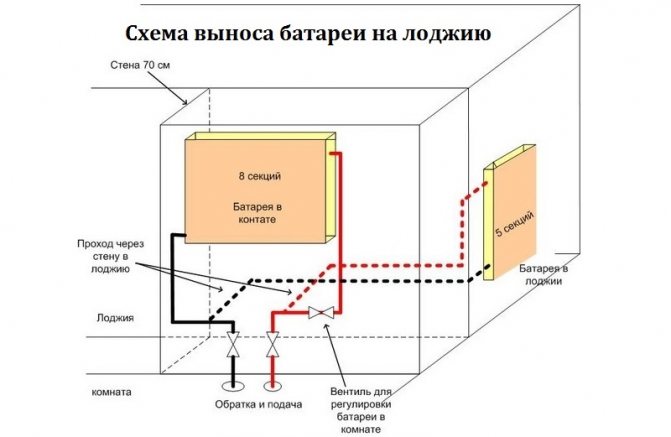

Preparing for installation
Preparatory activities include several mandatory stages.
Radiator selection
You need to choose the type of radiator based on its technical characteristicsthe most important of which is the working pressure. It must correspond to the limits of the pressure drops in the heating system of the house. As a rule, in old five-storey buildings the value of this indicator is 6 - 8 atmospheres, and in multi-storey buildings (10 - 14 floors) the pressure level already reaches 12 - 15 atmospheres.
The second important indicator is resistance to water hammer.... The service life of the radiator and the quality of heating depend on this characteristic.With a centralized heating system, it is almost impossible to avoid water hammer, therefore, when choosing equipment, you need to pay attention to this technical characteristic. Additional factors of importance include life, ease of installation, and design of the radiator.
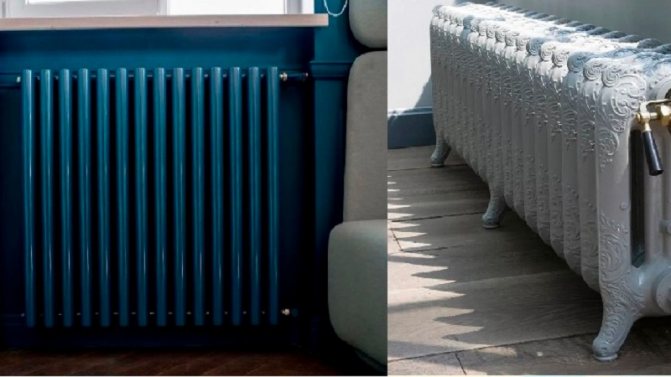

Radiator types
The types of batteries and radiators are divided by classes and materials of manufacture:
- Cast iron. They have the longest service life (up to 35 years). The main disadvantage is long heating and cooling.
- Steel panel. They will last about 15 years. They are appreciated for their high heat transfer rates and other technical characteristics, as well as their low cost.
- Steel tubular. They are produced in various colors and designs, which allows you to choose them for any interior. They have excellent consumer properties. The disadvantages include high cost.
- Aluminum. Average service life is 15 - 20 years. They are characterized by high thermal conductivity and low weight. The main disadvantage is the sensitivity to PH of the filler, therefore, it is recommended for private houses with an autonomous heating system.
- Bimetallic. The best option for an apartment, since they are unpretentious to the composition and quality of water, have good heat transfer, and are resistant to water hammer.
Calculating the number of sections
All types of radiators are composite, so you can select the number of sections required to heat a particular room, depending on the area.
The calculation must be made on the basis of generally accepted standards.:
- one aluminum section for 2 m2;
- one bimetallic section of 1.5 m2;
- add 1-2 sections for reinsurance.
Choosing a connection option
You can consider such connection methods:
- Side. The most common mounting method. The inlet and outlet pipes are mounted on one side of the radiator. The main requirement is to observe the distance between the fittings, otherwise the radiator will not warm up enough.
- Lower. With this option, both pipes are mounted at the bottom of the radiator - inlet on one side, outlet on the other. The main disadvantage is low heat transfer.
- Diagonal. The inlet is mounted on top on one side of the radiator, and the outlet on the bottom on the other. With this method, the least heat loss is achieved, therefore it is considered the best.
Which pipes to choose
For works it is recommended to choose reinforced polypropylene pipes, because they:
- bend easily, which allows installation of any complexity;
- do not deform during operation;
- do not require welding - flux is applied to the joints and sealed with a special blowtorch;
- have a high heat transfer coefficient.
It is possible to use copper pipes, but this is a more expensive and difficult option to install. Ordinary propylene products quickly deform and lose their attractive appearance.
Choosing a connection option
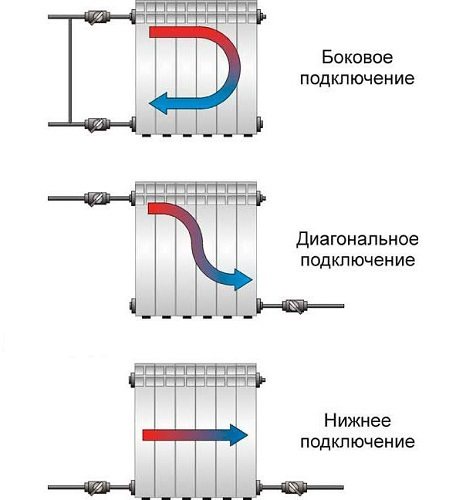

- Side. The most common mounting method. The inlet and outlet pipes are mounted on one side of the radiator. The main requirement is to observe the distance between the fittings, otherwise the radiator will not warm up enough.
- Lower. With this option, both pipes are mounted at the bottom of the radiator - inlet on one side, outlet on the other. The main disadvantage is low heat transfer.
- Diagonal. The inlet is mounted on top on one side of the radiator, and the outlet on the bottom on the other. With this method, the least heat loss is achieved, therefore it is considered the best.
Alternative solutions for balcony heating - heaters
When it comes to heaters on balconies, apartment owners are skeptical. - high power consumption, heat up for a long time, ineffective.
This was so even 5 years ago, when basically it was possible to purchase only a fan heater, popularly called "wind blower". They really consumed a lot of electricity, and after they were turned off, the room cooled down again.
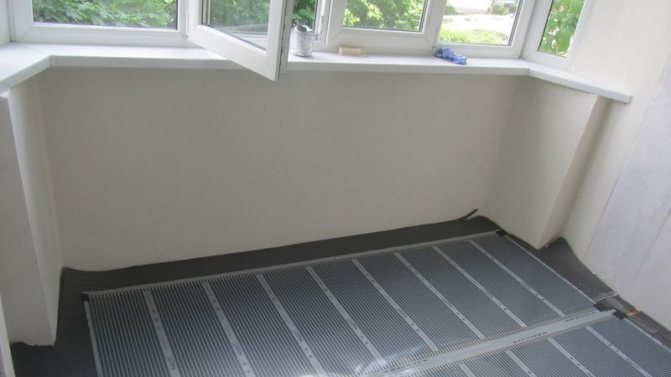

With the advent of infrared heaters, the situation with heating on the balcony has changed significantly for the better.... They quickly heat up the room, consume little energy, are safe to use, they can be left on overnight, when the required temperature is reached, the system automatically turns off the device. If, in addition to such a heater, you install a warm floor, you can spend time in complete comfort on your balcony. Regardless of the temperature outside the window.
Another alternative to taking out the radiator to the balcony is to connect a solar panel. Let's dwell on this option in more detail.
How to heat
To solve the question of how to heat the balcony, you should use the simplest heating methods:
- Installation electric oil heaters or convectors... They allow you to heat quickly and quietly. They spend a lot of electricity to maintain heat, a high-quality installation of the electrical network is required, the air is very dry;
- Infrared heaters I allow to warm up objects, ceiling, walls. Usually they are mounted under the cladding material, therefore, releasing heat, they transfer it to the materials, providing heating of the room and not drying the air. The work of the heater has a positive effect on the body and is useful for diseases of the human cardiac and vascular systems. Consumes electricity, heating a large area requires a large area of the heater, fire hazard, plastic elements of walls and ceilings can deform;
- Electric "warm floors" - the balcony is heated by a cable laid in the form of a snake under the decorative floor. Allows you to regulate the temperature, there is a uniform heating of the territory. It takes a long time to warm up, energy consumption, complexity of installation and installation of the floor finishing material. Materials that do not emit harmful substances when heated should be used.

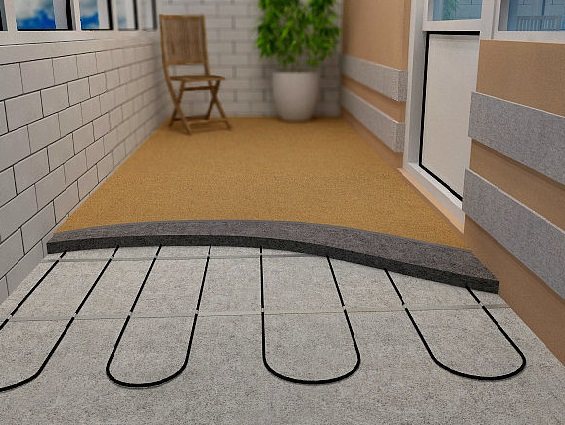
Also read: Thermal insulation of a balcony with mineral wool: types, stages, advantages
The use of any of the listed systems for heating is possible provided that the room is well insulated, otherwise heating will not work.
Solar panels for an apartment on the balcony
The ability to use alternative energy sources is a popular and interesting topic. Solar panels are one of the solutions that are most in demand in regions with frequent power outages in residential buildings.... They can even be installed on small balconies of city apartments. Of course, such an installation cannot replace the traditional power grid, but you will always have the opportunity to charge your mobile phone and light up the room.
The solar cell includes the following elements:
- Photocells. Generates an electric current when exposed to sunlight. They are plates of semiconductor material (polycrystals or single crystals of silicon, amorphous silicon, cadmium telluride, CIGS), which can be connected to each other and form panels of different sizes.
- Battery. Allows you to accumulate energy and use it as needed.
- Inverter. Converts DC battery current to AC current.
- Control system.
- Additional equipment with USB and other types of outputs for direct connection of gadgets, table lamps and small appliances.
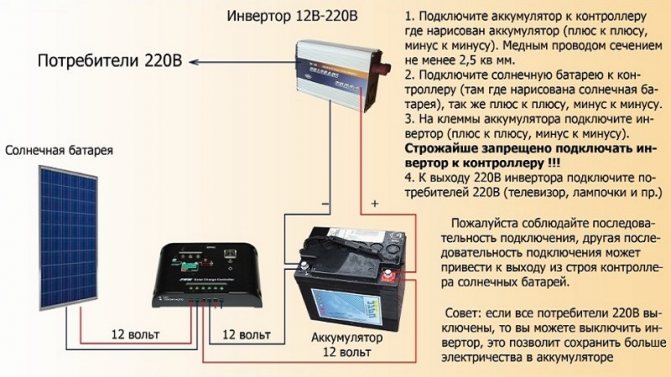

Solar cell efficiency
According to user reviews, a balcony system of 4 panels is capable of generating up to 2 kW of electricity per light summer day... This is enough for lighting the apartment with energy-saving lamps, recharging a mobile phone and, possibly, for the operation of some household appliances.
For the full use of all equipment (washing machine, water heater and stove), the current generated by the balcony solar system, of course, is not enough. In winter, system performance is 3-4 times lower.
Economic expediency
The cost of a branded factory installation for a complete household use starts at RUB 250,000 It is clear that the payback period in the middle latitudes of Russia will be very long. Chinese counterparts are much cheaper.
The system can be assembled with your own hands from componentsordered on AliExpress. According to the masters, a home-made design, made with an appropriate level of quality, costs no less than a ready-made battery from China, but this approach will be of interest to creative people with an engineering mindset.


Installation features and basic requirements
Installation of solar panels on the balcony does not require approval, provided that the design does not interfere with neighbors and does not create a potential hazard. The exception is houses that are architectural monuments in the historical part of the city - in this case, changing the appearance of the facade is possible only after obtaining permission.
In order for the solar panel on the balcony to work efficiently, installation rules must be followed:
- Select the correct location for the battery. It makes sense to install systems only on the south or southeast side. In addition, you need to make sure that they will not be shaded by neighboring buildings, trees and structures - a shadow covering only one element reduces the efficiency of the entire system by 2 times.
- The balcony should be glazed and insulated, as the battery quickly loses its charge in the cold.
- In the case of an open balcony, it is necessary at least to provide protective boxes that protect the equipment from moisture and contamination, or place it in the living room, which is inconvenient and not environmentally friendly.
- In Russian conditions with a small number of sunny days, it is recommended to use polycrystalline photocells - they are more sensitive even to a weak luminous flux.
- A solar cell works most efficiently when the rays hit it at a 90 degree angle. Therefore, ideally, the system should not be strictly vertical, but at an appropriate angle and be able to adjust following the deflection of the sun throughout the year. In the conditions of a city balcony, this is quite difficult to implement.
How to assemble a solar panel with your own hands
To assemble the panel yourself, you need the following materials and components:
- glass;
- photocells;
- aluminum profile for the frame;
- sealant;
- conductor (you can use a twisted-pair copper Internet wire).
- From the tools you will need a 40 W soldering iron and a multimeter.
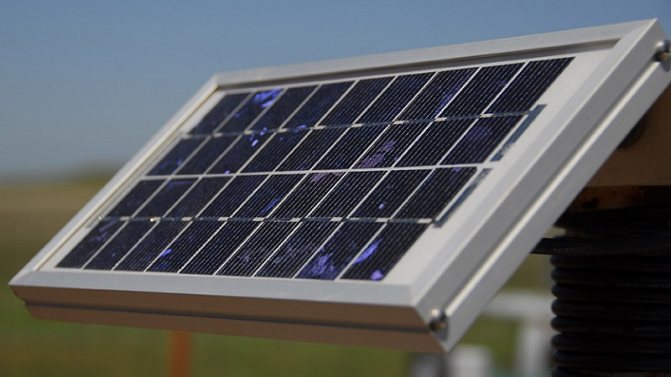

Sequence of work:
- Calculate the area and size of the glass so that all the photocells fit on it, taking into account the gap between them of 3-4 mm.
- Cut the aluminum profile at a 45 degree angle. Assemble the frame of the future battery.
- Cut the conductor to the desired length. Start soldering the photocells. This stage requires special care and attention, since silicon wafers are very fragile (you can buy already soldered photocells and skip this stage). Cover the soldering points with an alcoholic solution of rosin and tin. Strip the wires from insulation, tin and lightly solder at several points. Then solder thoroughly along the entire length.
- Carefully check the operation of each element under load. If at least one defective element gets into the general system, then the battery performance will be significantly reduced.
- Connect the cells to each other. First, you need to sequentially collect two independent links. Then lay them on the glass and connect them in parallel. The parallel-serial connection provides the highest system efficiency.
- Bond the photocells to the glass with silicone sealant.
- Place the workpiece in the aluminum frame and also glue.
- Cover the back of the battery with a second layer of glass. Seal the joints.
- Connect the battery with other elements of the system and install it on the balcony.
Installation work for installing batteries
The radiator is installed on the balcony after dismantling the battery in the adjacent room. Then a new device is mounted in the right place and connected to the general heating system.
Let's start with a list of the required equipment and tools. We will need:
- in fact, the radiator itself;
- polypropylene or copper pipes;
- soldering iron for pipes;
- Bulgarian;
- puncher;
- brackets and fittings.
So, everything is ready, the heating system is closed, and we need to cut off the kitchen (or room) battery. We make cuts in two places - 10 cm from the place of the future connection and next to the radiator itself. Then two holes with a diameter of 18–20 mm are drilled in the wall for the output of the riser pipes to the loggia. First, the roll is removed, the liners are mounted, the fittings are installed, and then the riser.
For such work, experts recommend using polypropylene pipes, due to their best technical parameters. It is easier to work with such material, so in this case you can complete the installation yourself.
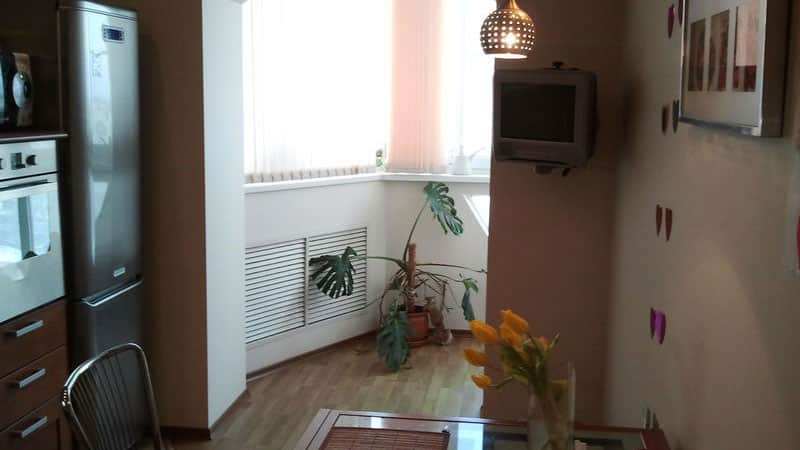

Option for mounting a battery on a loggia in a wired wall
The radiator is applied to the wall for fitting, corresponding marks are made on the wall, according to which the brackets are mounted. A new device is hung on them, on which plugs are attached, Mayevsky's crane, after which - the rest of the cranes, and last of all - the pipes.
In the case of polypropylene pipes, work on their connection with fittings and with each other must be done using a special soldering iron. If the pipes are metal, use a gas torch and solder. At the end of the installation, the system is tested for tightness.
Battery connection options
- Jumper tap. In this case, all heat, without loss, passes through the radiator.
- Without tap and lintel. Allows you to block the access of water to the radiator on the balcony, for example, in hot weather.
- Crane without lintel. It makes it possible not only to block the water supply, but also to remove the radiator, for example, if necessary, to carry out cleaning or cosmetic repairs.
We talked in sufficient detail about whether and how to bring the battery to the balcony. Rational use of additional space is always a pleasure. On a warm balcony, you can spend leisure time, relax and use it, as its area and your imagination allow. Well, what technical solution to choose to achieve this goal - the choice is yours!


